Articles
The Grave Humor of Genealogy
June 12, 2012 by ramona
Filed under Articles, Genealogy Cemetery Searches, Latest News
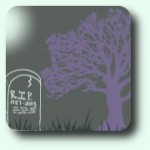 Genealogists have long used cemeteries as a source for finding ancestors in their family trees. Burial grounds are a repository of the history of people, they record lives lived and commemorate deaths.
Genealogists have long used cemeteries as a source for finding ancestors in their family trees. Burial grounds are a repository of the history of people, they record lives lived and commemorate deaths.
They are frequently filled with beautiful statuary, touching memorials and every so often …humorous remembrances.
Genealogy Fun
When doing a graveyard search, humor is not likely the first thing most genealogists and family historians have on their minds; the graveyard is a solemn place. However, if you stick with this hobby long enough you may run across some extremely entertaining memorials such as the following.
- Written on the gravestone for talk show host Merve Griffin:
“I will not be right back after these messages.”
- On the memorial of Mel Blank, famous for the voices of the Cartoon series Looney Tunes.
“That’s All Folks”
- Written on a tombstone in Thurmont MD:
“Here lies an Atheist. All dressed up and no place to go.”
- On the memorial of a certain Mr. Cook:
“Ma loves Pa- Pa loves Women. Ma caught Pa with 2 in swimming. Here lies Pa.”
- On a 1905 Gravestone:
“I told you I was Sick”
- On the grave marker for Robert Clay Allison (1840-1887):
“He never killed a man who did not need killing.”
- On the Grave of Anna Wallace:
“The children of Israel wanted bread, And the Lord sent them manna,
Old clerk Wallace wanted a wife, And the Devil sent him Anna.”
- On a stone from Burlington Vt.:
“She lived with her husband fifty years, And died in the confident hope of a better life.”
Another great tool for your cemetery searches is a Cemetery Visit tracking form. Get yours free with a Genealogy Beginner 30 Day Free Trial.
Is Ancestry.com for Sale?
June 6, 2012 by ramona
Filed under Articles, Latest News
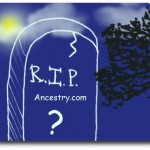 A report June 6, 2012 at Investors.com states genealogy service Ancestry.com is contemplating a sale of the company.
A report June 6, 2012 at Investors.com states genealogy service Ancestry.com is contemplating a sale of the company.
A leader in genealogy services since 1983 Ancestry.com is the biggest online family history service with several websites that aid people in tracing their family trees.
The genealogy giant totals 1.87 million paying subscribers and offers well over seven billion searchable records. On the inside, the company employs 1,100 people and reports June 5, 2012 from the Deseret News state that along with their recent purchase of Archives.com in April 2012 for $100 million, there are also plans to hire 50 to 70 new tech personnel.
The company based in Provo, Utah has seen an overall slow down in subscriber growth and in response is said to have hired Frank Quattrone’s San Francisco based company, Qatalyst Partners to source buyers.
Taken as a whole Ancestry.com finished the first quarter of 2012 with:
Despite this, last month’s cancellation of Who Do You Think You Are, a major promotional vehicle for the company, hit them hard when stocks dropped 13.7% after NBC announced the shows cancellation.
Family Tree: Understanding Cousin Relationships
June 4, 2012 by ramona
Filed under Articles, Genealogy Reports and Charts, Introduction to Genealogy, Latest News
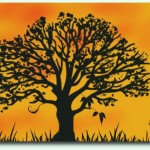 Relationship charts are a great tool for understanding your family tree…when you know how to use them. However, for the genealogy beginner they can be a little confusing.
Relationship charts are a great tool for understanding your family tree…when you know how to use them. However, for the genealogy beginner they can be a little confusing.
The purpose of a relationship chart is to help you identify the first common ancestor shared between you and a non-immediate family member such as a cousin.
For example, by looking at the first two rows of a family relationship chart you can see that the first common ancestor you share with a sibling is a parent, you share a grand parent with a niece or nephew and a great-grandparent with a great-niece or nephew.

This all seems straightforward until you start going down the chart and run into “cousins removed”. So what is a cousin “removed”? The easiest way to understand this is to think of it in terms of how many generations there are between first and second cousins and then go one-step further.
A first cousin is the child of an uncle or aunt and the first common ancestor you share is a grand parent.
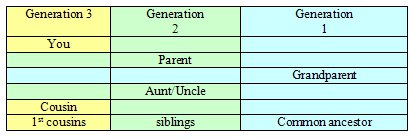
Second cousins are separated by another generation. Simply put second cousins are the children of first cousins. Both children are separated by two generations from their common ancestor.

To understand cousins once removed lets go that extra step. Your cousin once removed is a cousin of your parent.
- The common ancestor of you and your first cousin once removed are your great-grandparents
- There are two generations separating you from your great-grandparents (your parents and your grandparents)
- There is one generation separating your first cousin once removed from your great-grandparents (your great-uncle/aunt).
Since your parents cousin (your first cousin once removed) is one generation closer to your common ancestor there is one generation or “degree” of difference between the relationships you and the “cousin” share with the common ancestor.

One rule to help remember “removed” relationships are that there is always an unequal distance (grey squares) between the “removed” cousins and the common ancestor, while cousins that are not removed will have an equal distance (pink squares) between the common ancestor.
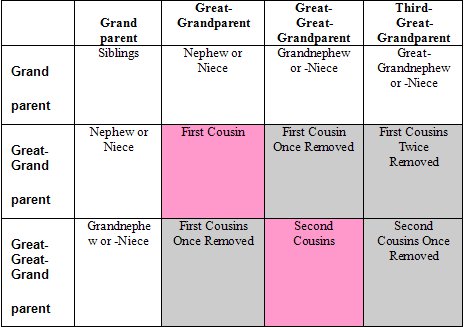
Did you know that in over ten generations you could have well over two thousand direct line ancestors?
Two parents + four grandparents + eight great-grandparents + sixteen great-great-grandparents + thirty two great-great-great-grandparents + sixty four great-great-great-great-grandparents + one hundred twenty eight great-great-great-great-great-grandparents + two hundred fifty six great-great-great-great-great-great-grandparents + five hundred twelve great-great-great-great-great-great-great-grandparents + 1,024 great-great-great-great-great-great-great-great-grandparents (2+4+6+8+16+32+64+128+512+1024) = 2046 direct ancestors in ten generations.
Sign up today for a Free Trial membership with Genealogy Beginner and you will receive a Family Relationship Chart as part of your Family Tree Starter Kit.
Preserving Family History: The Creative Family Tree
June 1, 2012 by ramona
Filed under Articles, Family History, Latest News, Preserving Your Family Tree
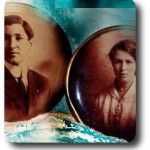 Genealogists and Family Historians are coming up with some wonderfully creative ways to document and share family trees. From video documentary to fine art pieces, the ways we are honoring our ancestors is becoming more and more creative.
Genealogists and Family Historians are coming up with some wonderfully creative ways to document and share family trees. From video documentary to fine art pieces, the ways we are honoring our ancestors is becoming more and more creative.
Video Documentary Family Tree
Documenting your family tree can become a visual auditory experience with the help of a company called Reel Tributes.
The inspiration for the company came with the passing of founder David Adelman’s Grandmother Eunice. Wanting to express her story, Adelman and his mother put together a video that documented their family history. The film tracked their family through photographs and stories beginning in 19th century Russia to their current life in San Francisco.
Emotionally powerful, the film created such a strong response that it motivated Adelman to start the company. Reel Tributes provides a way for families to memorialize their histories in a distinctive format.
As part of their service, Reel Tributes uses:
- Interviews
- Home videos
- Photographs
- Archival footage
Set to music and narrated throughout, the TV quality documentary films produce an overall effect that is eloquent and compelling.
Facebook Family History Book
As of 2011, Facebook had over 5 million users that is one in every 13 people. It is no small surprise that more and more family historians are using the social network to pay homage to their ancestors.
The new timeline has a beautiful display that allows families to come together and share information in real time; no matter how distance may separate them. Taken as a whole, a facebook page works as an interactive family history book. The unique format makes it possible to document your family’s story with photos, family legends, historical records, recipes and more. It may even lead you to finding new cousins who can help you grow and enrich your family tree.
Ancestral Art
Writer Thomas Merton said, “Art enables us to find ourselves and lose ourselves at the same time”. Most genealogists would probably agree that those words ring equally true in describing the experience of tracing our roots.
One of the most touching tributes to family history I have seen came in the form of a collage. Using scraps of material from old garments, copies of photographs, records and old letters the artist created a pictorial representation of their family’s journey from Czechoslovakia to Canada.
Creating a collage is a wonderful way of presenting a visual story of your family history.
Better yet, it is so easy you do not need to be a professional artist to make one. All it takes is some good quality copies of photos and documents as well as a few art supplies and you will have not only a visual reference but also a gorgeous new piece of art for your wall. A collage also makes a wonderful gift and it is simple to have prints made from your original.

Of course, all of this starts with those first steps of learning genealogy.
Genealogy Beginner can get you started with a free one-month subscription that includes Eight, Step-by-Step Weekly Lessons, Personal Support from Our In-House Genealogists and a starter kit complete with family tree charts, research tracking forms and more.
Genealogy Death Records: Cause of Death
May 25, 2012 by ramona
Filed under Articles, Genealogy Death records, Genealogy Records 101, Latest News
 Records of our ancestor’s deaths can reveal vital clues that help with tracing the family tree. Genealogists have long recognized the importance of the information held in these records such as names, dates and places.
Records of our ancestor’s deaths can reveal vital clues that help with tracing the family tree. Genealogists have long recognized the importance of the information held in these records such as names, dates and places.
However quite often, family historians want more than the dry facts. We want to get to know our ancestors through the paper trails they have left behind. Even more importantly, we sometimes want to learn more about a family history of disease.
Causes of Death in Your Family Tree
While obtaining these records has become easier over the years, understanding the cause of death is often a conundrum. Whether they are natural or accidental, causes of death can be extremely perplexing.
Even when they seem straight forward, like in the case of P. Sinclair whose death record stated lost at sea. After a good deal of research went into determining where he was lost at sea it was discovered that the term was often applied to sailors who had celebrated a little too heavily while on leave and drowned from drunkenly falling off the dock.
Making things more difficult are archaic medical terms that seem quite bizarre to our 21st century minds. It is hard to know what is meant when the cause of death cited is poisoned face.
Not all causes of death on old records are as extreme as the example above however they can still be a challenge. Here is a look at some common and not so common terms you are likely to run across in your research.

The causes of death found in ancestral records are as diverse and numerous…well, as our ancestors.
If you are interested in tracking this fascinating subject in order to research and document possible hereditary diseases, Genealogy Beginner recommends using our Major Milestones Tracking Form. Download yours today with your 30 Day FREE Trial.
Family Heirlooms: Preserving the Past
May 20, 2012 by ramona
Filed under Articles, Family History, Latest News, Preserving Your Family Tree
 Those interested in climbing their family tree often have a passion for the stories and keepsakes passed from generation to generation.
Those interested in climbing their family tree often have a passion for the stories and keepsakes passed from generation to generation.
It is not surprising that they frequently find themselves the guardians of traditions, stories and irreplaceable family heirlooms. Family heirlooms come in many forms, from jewelry to old diaries to 100-year-old garments like christening gowns.
Being the keeper of the family treasures is a big responsibility and rarely taken lightly. While some heirlooms are easily cared for, others such as very delicate old textiles like quilts, needlework pieces, dolls and garments require very careful handling.
Old Textile Do’s and Don’ts
Caretakers with the best of intentions sometimes damage old textiles through lack of knowledge. The following list will help family historians in following the first rule of caring for your family’s textile keepsakes…do no harm.
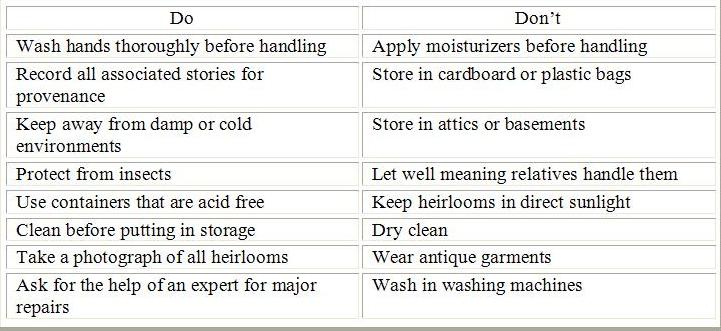
Cleaning Old Textiles
Old textiles are often weakened through time. When cleaning never wring, scrunch or hang them as they may tear easily. Always lay them out flat to dry and wrap them in acid free tissue paper or a clean white cotton sheet before storing. It is very important that heirloom textiles are always stored flat and never crushed.
Wool
Before you clean any antique woolen garment, it is a good idea to test it for color fastness. To do this simply apply a little water then squeeze it in between some paper towel. If the color bleeds, you will need to give it a vinegar treatment to stabilize the dye. To do this, soak the garment in a mixture containing one gallon of water to one tablespoon of white vinegar for five to ten minutes. To dry the garment place it between a couple of thick absorbent bath towels, press out excess moisture and lay flat to dry.
Cotton
Cottons have a tendency to yellow with age and shrink if not dried properly. Before attempting to wash any cotton garment or textile, try cleaning with a soft brush and a low suction vacuum. When cleaning cotton garments it is best to treat stained areas with hydrogen peroxide rather than to attempt cleaning the entire garment. Before attempting, any major restorations consult a professional.
If you’re the guardian of your families textile treasures Genealogy Beginner recommends reading “The Textile Conservator’s Manual”, by Sheila Landi available from Amazon.com.
WDYTYA Cancelled: A Sad Farewell
May 16, 2012 by ramona
Filed under Articles, Latest News
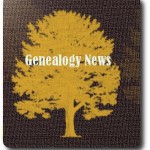 With only four million viewers for this season’s premier and steadily tumbling ratings, NBC has cancelled the genealogy program “Who Do You Think You Are” in its third season…and it is a sad farewell for many fans.
With only four million viewers for this season’s premier and steadily tumbling ratings, NBC has cancelled the genealogy program “Who Do You Think You Are” in its third season…and it is a sad farewell for many fans.
Over its three-year span, the show produced by Lisa Kudrow has helped an A-list of big names such as Gwyneth Paltrow, Susan Sarandon and Martin Sheen to trace their family trees all over the globe. The show should also be credited for the part it has played in inspiring a great many viewers to search out their own ancestral roots.
No one will miss the show more than sponsors Ancestry.com as the backlash hit them hard when stocks dropped 13.7% after NBC announced the cancellation.
In April of last year, Ancestry.com’s stocks were at a peak with a worth of $45.79 and 1.7 million subscribers. At the opening of trading on Monday May 14, 2012, the genealogy giant’s shares were sitting at $26.16. By the close of the day, stocks had devalued to $22.57 losing $3.59 through the day.
In a press release earlier this week Tim Sullivan, President and CEO of Ancestry.com said, “We want to thank NBC for their support of this terrific series, which over the last three years has inspired many viewers to follow their passion to learn more about who they are and where they come from,” adding, “We have a great partnership with the show’s producers, Is or Isn’t Entertainment and Shed Media, and we look forward to exploring other avenues of distribution.”
The programs last episode will air tonight with celebrity guest Paula Deen.
Family Heirlooms: 19th Century Photographs
May 13, 2012 by ramona
Filed under Articles, Family History, Latest News, Preserving Your Family Tree
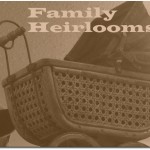 Often making a journey across time and continents, family heirlooms are a solid physical connection to a very personal ancestral past that tend to hold memories, which resonate deep within us.
Often making a journey across time and continents, family heirlooms are a solid physical connection to a very personal ancestral past that tend to hold memories, which resonate deep within us.
Those who have held their great-grandmothers wedding dress or read the letters written home from a relative who served in a war understands the deep link felt across the generations. One truth shared by all family treasures is that… it is the stories that accompany them that give them the greatest meaning and tie us to our generations past.
Sadly, sometimes the objects remain while the stories are lost. Genealogically this can be a great opportunity to discover a new family history story or ancestor. If you have, an heirloom that has become a bit of a mystery an investigation may be in order. The type of investigation you conduct will likely depend on the object you are investigating. While family heirlooms are made up of every object imaginable, from jewelry to family bibles. Often the photographs pose the most problems…particularly very early ones.
19th Century Photographs
The first step in solving the puzzle of a mysterious early period photograph is deciding what type of photo you have. A difficult task with these three photo types of the 19th century.
Daguerreotype:
A good way to decide if it is a Daguerreotype is to hold a piece of paper over the surface and see if the image is reflected in reverse. Additionally, Daguerreotypes are often tarnished around the edges of the picture. If it is a Daguerreotype is will date from 1839-1860.
Ambrotype:
Ambrotypes are often hand tinted. To figure out if what you have is an Ambrotype carefully remove it from the case and hold it up to the light. Ambrotypes were printed on glass so you should be able to see through it. Another clue is to look for any cracks or peeling as another hallmark of the Ambrotype is the black paint used to process the picture. Ambrotypes date from 1854-1865.
Tintype:
It can be hard to tell the difference between a Tintype and an Ambrotype. The only way to be certain is to hold a magnet near it. Tintypes were made of a very thin iron and should be attracted to the magnet. Tintypes were common during the civil war and date from 1856-1920.After you have determined the type of photograph, you may need to track down its geography. A hint you may find helpful, is through the clothing worn by the people in your photograph. Clothing, accessories and hairstyles may be great hints for women, while uniforms can be a dead give away for men. All can help you to zero in on the country or origin. Once that is determined, the next step is to search for period photographers from that country. Several indexes by country list photographers so you should not have too much trouble once you know the photo type.
Additionally, some early photographers may have developed an identifiable style that can be helpful in tracking them down. For example, there may be preferences in the manner which subjects are posed (seated or standing), or backgrounds and props used may offer some clues. This process can be very time consuming, as it is a matter of searching and comparing your photo to the ones found in your search. Even at that, be cautious about your conclusions.
Solving the mystery of your family heirloom can be fun and rewarding. Better yet, it may help flesh out your family history, add new branches to your family tree and fill out another space on your family template. All good reasons to start your detective work A.S.A.P.
If you have a mystery, post it in the Ask A Genealogist forum, or share with us how you solved a mystery on the Discovery Panel and tell us how you did it. Genealogy Beginner would love to hear about your family treasures and heirloom stories.
Black Sheep Ancestors
May 11, 2012 by ramona
Filed under Articles, Genealogy Research Resources, Latest News, Sharing Genealogy Information
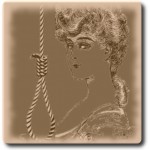 Pirates, Outlaws and Ne’er do wells; it would be uncommon to research any family tree without finding at least one skeleton in the closet.
Pirates, Outlaws and Ne’er do wells; it would be uncommon to research any family tree without finding at least one skeleton in the closet.
Ancestors with a criminal record can range from unfortunate debtors who paid a price for being poor to thieves and pickpockets or even those executed for murder. Although none of us wants to find we descended from a cold-blooded killer, having a rogue in the family tree does add a little excitement.
Throughout history there have been criminals and alongside them court systems and institutions for dealing with them. With prisons and courts come the records they generate and those records are a wonderful resource for genealogists and family historians looking for a missing ancestor.
Information found in court and prison records can include the accused or inmate’s next of kin, name and age. Whether or not they could read, their trade, the reason they were in trouble and the sentence they received for their crime.
Finding Criminals Past
Blacksheep Ancestors is a free genealogy site filled with prison lists and court records that encompass Great Britain, Canada and the US.
One fantastic and free searchable list is The Proceedings of the Old Bailey, 1674-1913, which has a fully searchable database that contains 197,745 criminal trials from London’s central criminal court.
The site also has links to the biographies of petty and master criminals alike where you can read the stories about:
- Catherine Hayes, who in 1725 conspired with her lovers to kill her husband and was tried, convicted and executed for her crime.
- The Fourth Earl Shirley, Laurence Ferrers, who was the last peer of the realm convicted as a common criminal and hanged
- Eliza Fenning, a young cook who was found guilty of the attempted murder of her employers by poisoning their food. Up until the moment Eliza was put to death, she claimed her innocence.
Whether you have an ancestor who was a minor miscreant or someone with an infamous criminal past, Blacksheep Ancestors is a fascinating genealogy website dedicated to helping you trace the romantic rogues and villainous scoundrels in your ancestral line. Share your Black sheep story on Genealogy in General.
Genealogy Quotes: In the Words of our Ancestors
May 8, 2012 by ramona
Filed under Articles, Family History, Latest News
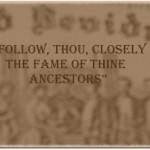
Family name, lineage, bloodline, pedigree, family tree and genealogy are all words that resound with a wish to be remembered and a desire to honor our forebears.
Our desire to celebrate our ancestors has possibly been around as long as we have and so have genealogy quotes, proverbs and sayings.
From the “begats” of the Christian bible that trace the lineage of Jesus, to the significance of “Word Fame” to the Vikings. The importance placed on our family trees is reflected in proverb, archaic literature and the current popularity of websites dedicated to genealogy quotes. Just type the phrase “Genealogy Quotes” into Google and you will come up with 11,600,000 results.
Wise words such as this ancient Gaelic proverb:
“Follow, thou, closely the fame of thine ancestors” (lean-sa dlùth ri cliù do shìnnsear) is perhaps one of the oldest recorded Western European genealogy quotes and one that continues to inspire family history hunters.
If you are in need of some inspiration or just love to reflect on the words of wisdom left by past generations – about past generations. You are going to love Genealogy Beginner’s list of :
Genealogy Quotes: In the Words of our Ancestors
“Distinguished ancestors shed a powerful light on their descendants, and forbid the concealment either of their merits or of their demerits”
Gaius Sallustius Crispus (86 BC – 35 BC)
“He who boasts of his ancestry praises the merits of another”
Seneca (4 BC – 65 AD)
“It is indeed a desirable thing to be well descended, but the glory belongs to our ancestors”
Plutarch (45–120 CE)
“To forget one’s ancestor’s is to be a brook without a source, a tree without root”
Chinese Proverb
“The mark of a Scot of all classes [is that] he … remembers and cherishes the memory of his forebears, good or bad; and there burns alive in him a sense of identity with the dead even to the twentieth generation.”
Robert Louis Stevenson (1850-1894)
“Cattle die, kinsmen die, one day you yourself shall die, but the reputation of the dead never dies.”
Havamal
“He who has no fools, knaves, or beggars in his family was begot by a flash of lightning”
Old English Proverb
“We need to haunt the house of history and listen anew to the ancestors’ wisdom”
Maya Angelou
“People will not look forward to posterity, who never look backward to their ancestors.”
Edmund Burke (1729-1797)
Feeling inspired? If you want to learn genealogy start with Genealogy Beginner
